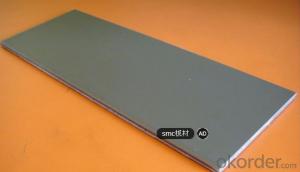It’s a common sight to see sleek, high-performance vehicles zooming down the highway, their aerodynamic designs and impressive speed a testament to the cutting-edge materials used in their construction. Among these materials, carbon-fiber composites stand out for their exceptional strength and light weight, making them a favorite choice for industries ranging from automotive to aerospace. But what exactly is it about carbon-fiber composites that make them so special? Let’s dive into the world of materials science and explore the strength of fiberglass in carbon-fiber composites.
The Essence of Carbon Fiber
Carbon fiber is essentially thin strands of carbon atoms bonded together in a crystalline formation. It’s not just any material; it’s a material with a superhero’s strength-to-weight ratio. Imagine a material that’s as strong as steel but significantly lighter. That’s the promise of carbon fiber. It’s the reason why it’s used in everything from race cars to high-end bicycles, and even in the construction of buildings and bridges.
Fiberglass: The Unsung Hero
While carbon fiber gets all the glory, fiberglass is the unsung hero in the composite world. Fiberglass, or glass-reinforced plastic (GRP), is made from glass fibers woven into a fabric and then soaked in resin. It’s a versatile material that’s been around for decades, but when combined with carbon fiber, it creates a composite that’s even stronger and more durable.
The Synergy of Carbon and Fiberglass
The real magic happens when carbon fiber and fiberglass are combined. The result is a composite material that’s incredibly strong, stiff, and lightweight. This is because the carbon fiber provides the tensile strength, while the fiberglass adds compression strength. Together, they create a material that can withstand immense forces without breaking or deforming.
Applications in Modern Industries
The applications of carbon-fiber composites are vast and varied. In the automotive industry, they’re used to create lighter and more fuel-efficient vehicles. In aerospace, they’re key to building planes that can fly faster and farther while carrying heavier payloads. And in sports equipment, they’re used to make everything from tennis rackets to golf clubs that perform better and last longer.
The Manufacturing Process
The process of creating carbon-fiber composites is both an art and a science. It starts with the selection of the right type of carbon fiber and fiberglass, followed by the careful alignment of the fibers in a specific direction to optimize strength. The fibers are then impregnated with a resin, which binds them together and hardens to form the final composite. This process requires precision and expertise to ensure the best possible performance of the material.
The Challenges and Solutions
Despite their many advantages, carbon-fiber composites do face some challenges. One of the main issues is their cost; they can be expensive to produce. However, advancements in manufacturing techniques and the increasing demand for lightweight materials are driving down costs. Additionally, recycling and reusing carbon-fiber materials are becoming more common, making them more sustainable over time.
The Future of Carbon-Fiber Composites
As we look to the future, the potential for carbon-fiber composites is immense. With ongoing research and development, we can expect to see even stronger, lighter, and more versatile materials emerging. These innovations will continue to push the boundaries of what’s possible in various industries, from transportation to construction, and beyond.
In Conclusion
The strength of fiberglass in carbon-fiber composites is nothing short of remarkable. It’s a testament to the power of combining two materials to create something that’s greater than the sum of its parts. As we continue to innovate and push the limits of material science, the future of carbon-fiber composites looks brighter than ever. Whether it’s making our vehicles faster, our planes more efficient, or our sports equipment more durable, the impact of these materials will be felt across the board.

